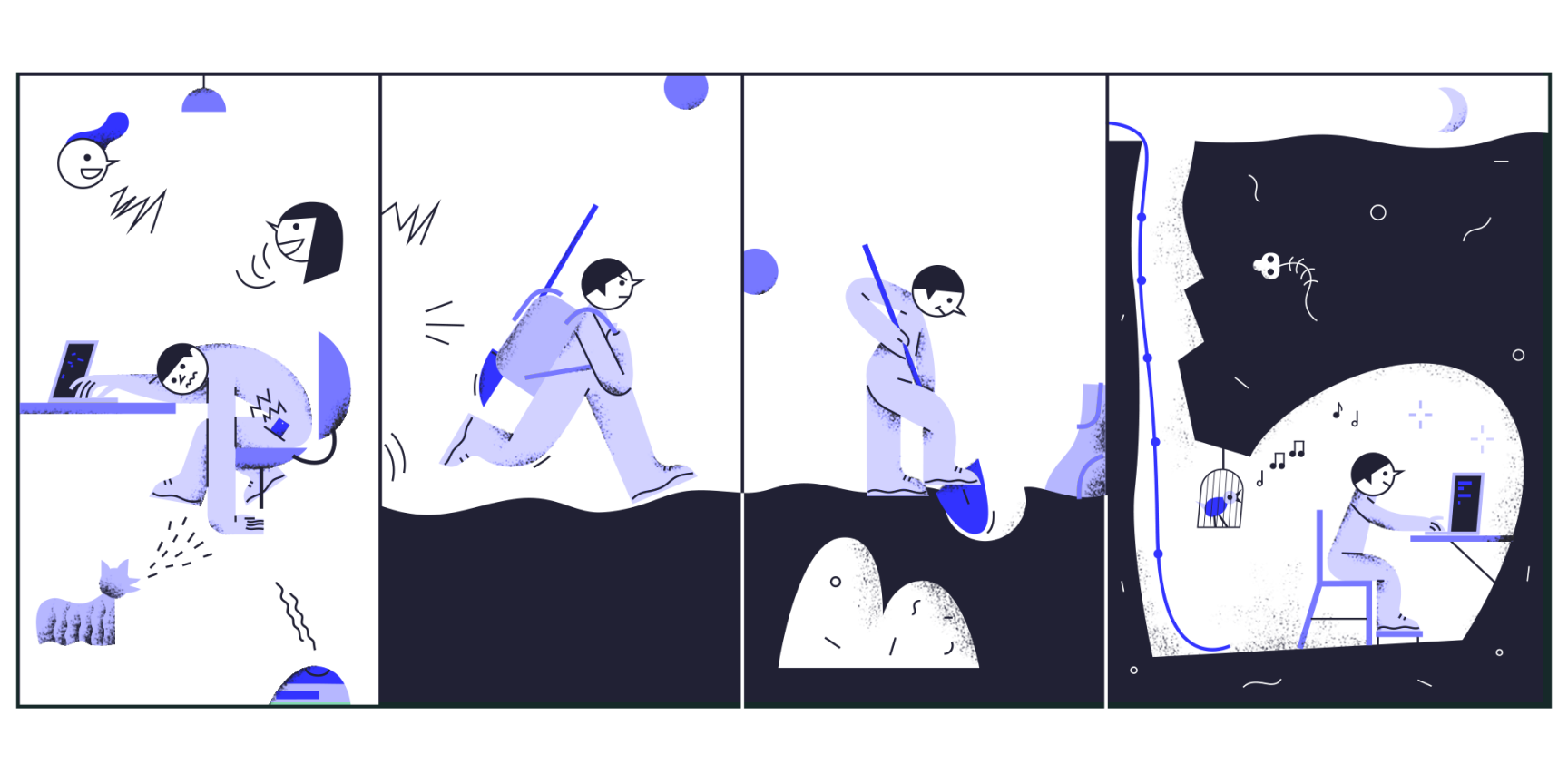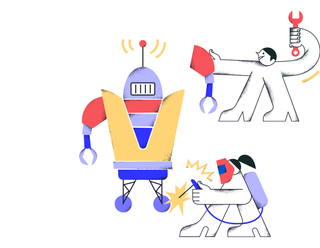Website (or web application) development strategies have been evolving continuously over the past decade. Today, web development companies fall into two broad groups – full-stack agencies and specialized, or niche, agencies. The first category, still dominating the Asian market, consists of full-service agencies used to offer a wide range of services (from back-end and design, to front-end development and QA), while specialized agencies are offering a limited range of services focusing on specific kind of works. Nowadays, it is a common practice worldwide to divide the development process into two parts. There are several reasons behind it, however, the key question is whether it is a good idea to have front-end part separated for a product.
Specialize to stand out
When we started our web development business back in 2012, we have decided to take on a specific front-end development niche. We narrowed our position to only work within this certain market segment and put all of our resources into the offering of high-end services to help fulfil the specific needs of our customers.
Narrowing the service offerings helped us to be more productive and earn a strong reputation in the industry (Russia and CIS countries). Focusing on a few niches instead of taking on most of them allowed us to specialize and become well-known for being experts in a particular type of web development.
Further in this article, we’ll focus on the advantages and some disadvantages of a separate front-end development model. These are based on our expertise in general and our observations made while exploring the Asian market.

Two main approaches to web development
The front-end side of a website or web app is the part that is built to interact with users directly. Front-end developers are responsible for the user interface while full-stack development includes both front-end and back-end programming focusing on business logic, data models among other things. Hence, full-stack development represents the complete web development process.
Full-stack development has become popular across various countries worldwide, including Singapore and other Asian states. This is mainly because frequent problems in development are said to come from the lack of interaction between front-end and back-end development teams. It is believed that front-end developers are not always fully informed about changes in the back-end and API or vice versa. When distributed development teams are working in different time zones, this also becomes an issue.
It is also generally believed that a full-stack team, or an agency, addresses a wider range of problems and solves most of them before they even happen. Such agencies have fewer interaction issues and have a team of specialists working well together.
A full-stack development approach is something that lots of companies got used to for large and complex projects, and many of them accepted this approach and have been satisfied with it. At the same time, more companies are reluctant to use it. With the emergence of high-performance technologies, more of the processing power can be handled by web browsers, which allows to move away from this “united” (full-stack) model and define a conceptual split of front-end from back-end development and other things.
Benefits of separated front-end development
We have outlined a number of features of a split-stack approach to web development (with a dedicated front-end team), as well as its benefits that should be considered.
Independent technology stacks. The separation of front-end development from other tasks helps to eliminate all the restraints on technology choices that each may have imposed on the other. This leads to the use of completely independent stacks, that could have been difficult or impossible to implement in a universal model. Such approach allows to choose the best technologies for a given project.
Simultaneous development and fast deployment. With front-end and back-end split, both layers can be developed independently and simultaneously. As neither stack is reliant on the other, the front-end code can be tested and deployed whenever it’s done, with API endpoints brought together in the end. Besides you can make a new front-end part, integrate it with an old back-end part, and upgrade each independently further on.
Modularity. By having front-end separated, it is much easier to work on one module keeping the other one untouched. Two teams can work on front-end simultaneously at a different pace and without messing up with each other.
Simple scaling. Keeping the front-end development separate can lessen the chances of breaking the entire website during the scaling process that follows. Further debugging would be easier as you would already define whether it’s a front-end issue or something else. Moreover, transferring, partially, the logic from back-end to front-end can simplify the scaling process, while reducing hardware load (coming from the increasing number of users) and OPEX.
Deeper understanding. Full-stack agencies are the jack of all trades, and master of none, as the proverb goes. It’s more difficult for a full-stack agency to dig deeper into any of the front-end issues. They have little to no time for exploring something new and gaining wider expertise in everything they do or they can even outsource parts of the project.
Cost-effective. Finally, when it comes to hiring a full-stack development agency, one should get ready to pay more since these agencies have higher expenses which force them to imply higher costs on the end-customers. Companies offering dedicated front-end development services do not spend more on hiring full-stack developers with higher salary rates. Besides, finding a jack of all trades itself is famously challenging in the tech industry.
Conclusion
These are only a few of the advantages of a split-stack development model but it can be extended to include a much wider array of benefits. We’re not suggesting that there are no cons of buying front-end development services separately (the above-mentioned project management issues, which may cause bugs or progress and a bit more of paperwork), but they are far and few as compared to the pros.
Niche specialization is simply that good. Just like we prefer a specialized doctor or lawyer for a specific problem you should hire a specialized company for handling each layer of the development. A full-stack model is a common approach for the Asian market, however, a split-stack can be viewed as a rising trend, that will be spreading in the Asian region over the next years.
